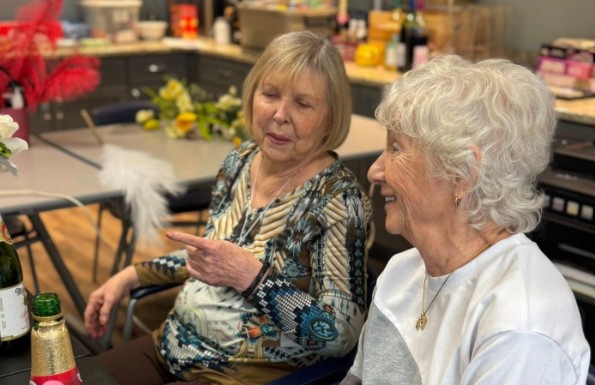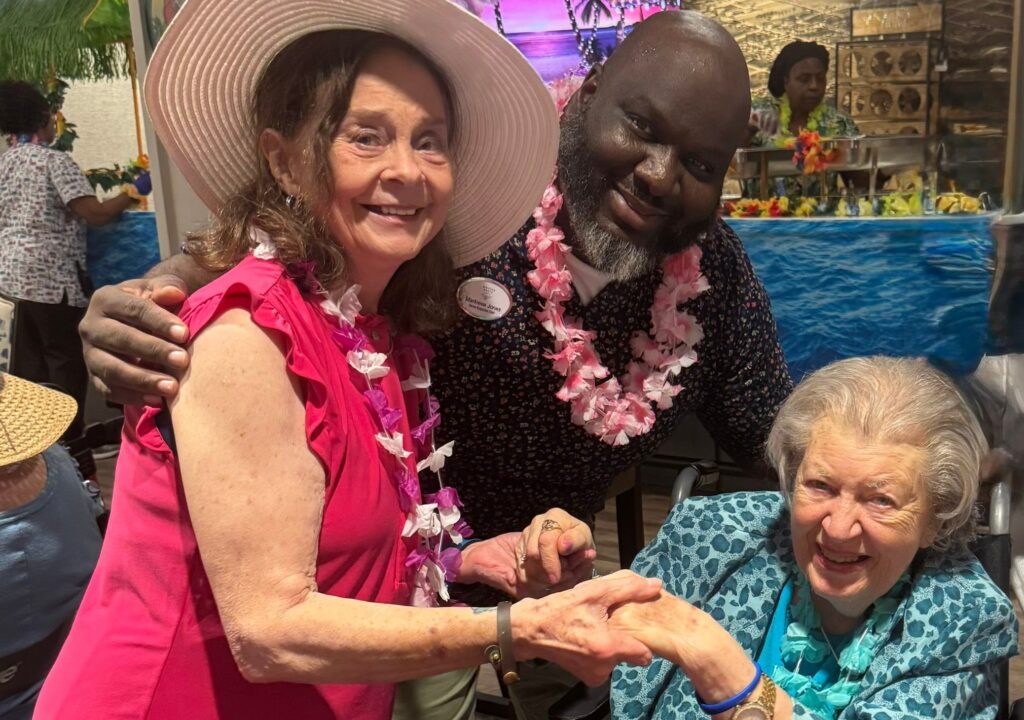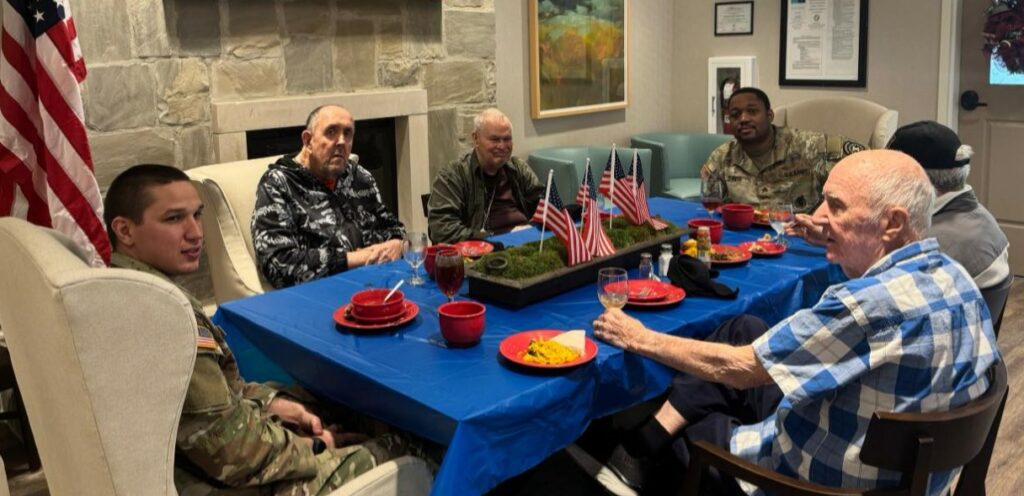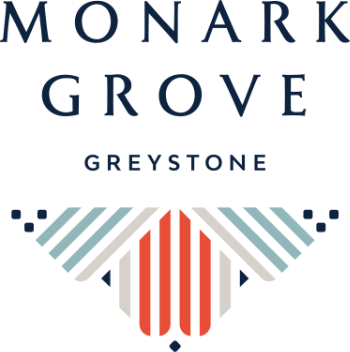There’s a moment — quiet, personal — when you realize life is asking something different from you now. Not less. Just different.
Maybe it’s a shift in energy, in priorities, or in how much space you want to hold alone. That’s where Assisted Living steps in: not as a solution to a problem, but as a smart, intentional way to shape what comes next.
At Monark Grove Greystone, we believe this stage of life deserves infrastructure, not improvisation — connection, not distance. These five reasons aren’t about convincing anyone. They’re about offering clarity, options, and a lifestyle that supports the version of you that’s still unfolding.
1. Preserve Your Energy for What Matters Most in Your Golden Years

🌟 Why this matters after 70
With age comes clarity — a clearer sense of what brings meaning, and a deeper awareness of what drains us. After 70, daily tasks that once felt routine — cooking, cleaning, organizing appointments, navigating home hazards — begin to quietly erode energy that could be better spent on connection, creativity, and rest.
Assisted Living offers a reallocation of energy: away from chores, toward joy.
⚠️ The hidden costs of doing it all alone
According to a study published in the Journal of the American Medical Directors Association, seniors living in assisted environments “had lower rates of hospitalization and were more likely to receive preventative care and support services” compared to those aging in place without structured support.
Another report by the National Investment Center for Seniors Housing & Care (NIC) found that older adults living in senior housing lived longer on average and experienced fewer avoidable health crises, thanks to early interventions and continuous care.
These aren’t just numbers — they reflect the cost of spending physical and emotional energy on things that no longer need to be managed alone.
What daily support looks like in Assisted Living
Assisted Living communities are designed to relieve the burdens that come with age, including:
- Support with Activities of Daily Living (bathing, dressing, grooming)
- Medication management and reminders
- Housekeeping and linen services
- Nutritious, chef-prepared meals every day
- Transportation to appointments and errands
- 24/7 staff availability and emergency response systems
- Safer physical environments to prevent falls and injuries
This isn’t about dependency — it’s about strategic energy conservation.
🌿 What you gain in return
Once the draining parts of daily life are supported, what remains is space for:
- Morning walks, without worrying about dishes
- Quiet reading time, instead of managing schedules
- Conversations and connection, not coordination
- Classes, creativity, and curiosity
- Deep rest and presence
✨ A shift from obligation to intention
Assisted Living is not about doing less — it’s about living with more intention. When your energy is no longer consumed by maintenance and logistics, you begin to inhabit your days differently.
This chapter is not a slowing down, but a shifting inward — toward what nourishes, inspires, and connects you.
Because in your golden years, freedom isn’t about proving how much you can still do.
It’s about choosing where your energy truly belongs.
2. Assisted Living Communities Offer Safe and Adaptable Environments for Seniors
🧠 A quick thought experiment:
Ask yourself:
- Do you avoid using certain areas of your home because they feel unsafe?
- Do you plan your day around the energy it takes to do basic things like cook or shower?
- Do you sometimes feel more alert at night — not out of insomnia, but because you’re the only one home?
If any of these ring true, it’s not a personal failure. It’s an indicator that the environment may no longer be working for you.
🧰 What an adaptable environment really means:
A well-designed Assisted Living setting includes:
- Mobility-friendly architecture: wide hallways, no-step entries, handrails that blend into the design
- Smart safety systems: discreet emergency call buttons, motion sensors, staff check-ins based on your routine
- Health-responsive services: care plans that evolve as your needs change — not after a crisis, but before
- Predictable rhythms: meals, activities, and support you can count on, with flexibility built in
This kind of environment doesn’t take away your independence — it gives it structure.
📌 Example: the difference between “I can” and “I should”
Let’s say you can still drive, cook, clean, manage meds. That’s great. But ask:
- Is doing all of this giving me energy?
- Or is it just proving I still can?
Many older adults reach a stage where they realize: “Just because I can still manage everything doesn’t mean I should have to.”
And in an Assisted Living setting, you get to choose when to do something yourself and when to lean on support.
That flexibility isn’t about dependence. It’s about energy management, self-awareness, and agency.
🧭 Real safety is invisible — and that’s the point
The best safety features aren’t the ones that constantly remind you you’re at risk.
They’re the ones that fade into the background, so you can live your day with clarity and ease, without micromanaging your movements.
- You don’t stop using the stairs because they’re risky. You walk a flat hallway instead.
- You don’t call for help when you fall. Someone notices before that happens.
- You don’t overthink how to organize your medications. They’re managed with you in mind.
Safety becomes part of the architecture of your life — not a disruption to it.
🧩 What does “adaptable” really mean?
It means not having to uproot your life when your body or health shifts.
You stay in the same community. You keep your relationships. You keep your rhythm.
The level of support simply grows with you — quietly, respectfully, intentionally.
🧶 In short: aging well means living in an environment that doesn’t argue with who you are today.
Not better or worse than before — just different.
And when your space, your care, and your routines acknowledge that difference without judgment, you move through your day with more calm, more confidence, and more space to be yourself.

3. Shared Routines and Social Belonging Are Essential to Aging Well
Aging isn’t just a physical process. It’s social, emotional, cognitive. And like any stage of life, it thrives in rhythm and in relationship.
But here’s something that often gets overlooked: what many call “loneliness” in older adults is often a lack of meaningful structure and shared experience — not just absence of company.
Why do shared routines matter so much in later life?
Research in aging consistently shows that predictable, social structures help regulate sleep, stabilize mood, and support memory retention.
In fact, according to a 2021 article in The Lancet, lack of social engagement is among the top modifiable risk factors for dementia.
Meanwhile, daily group-based activities — even as simple as communal meals — have been linked to:
- Greater cognitive alertness
- Reduced depressive symptoms
- Improved sleep quality
- Stronger sense of identity and orientation
In short, structure is not restrictive — it’s protective.
And when that structure includes others, the benefits multiply.
What does social belonging look like in Assisted Living?
Let’s move away from the outdated stereotype of “organized fun.”
The best Assisted Living communities create micro-communities within the whole — spaces where people feel seen, welcomed, and able to participate at their own pace.
That includes:
- Consistent mealtimes shared with familiar faces
- Weekly and daily group offerings (from trivia to meditation to movie nights)
- Informal social spaces: lobbies, gardens, lounges that invite conversation
- Rituals that evolve naturally: “we always walk after breakfast,” or “Fridays are music mornings”
These aren’t imposed — they emerge. And they give the day shape, texture, and meaning.
📍Key reflection: Belonging is not measured by the number of people around you. It’s about having a place in the pattern.
A place where your absence would be noticed.
Where your preferences matter.
Where you don’t have to explain yourself to be understood.
That’s the kind of community that supports real emotional health in aging.
Not forced cheerfulness — but quiet continuity. Something to hold onto when everything else starts to shift.
So what does “aging well” actually mean?
It doesn’t mean staying busy every second.
It means feeling anchored, not just alive.
It means sharing space with others who are also navigating this chapter — with humor, with history, with fatigue, with curiosity.
Assisted Living communities don’t eliminate solitude — they balance it.
They offer a rhythm you don’t have to build alone.
And in that rhythm, many older adults rediscover what was missing — not just connection, but belonging.

4. Simplify Life After 70 with a Stress-Free Assisted Living Lifestyle
👀 Let’s start with a question:
What does “stress” look like after 70?
It’s not the same as in your 40s or 50s. It’s more subtle — and it hides in daily repetition:
- The constant list of things that need fixing or remembering
- The pressure of cooking when you’re tired
- Managing pills, calendars, and appointments
- Keeping the house just livable
- Wondering if someone will notice if you didn’t sleep well
Stress after 70 doesn’t shout. It quietly chips away at your energy.
🎯 Try this quick reflection:
Which of these describe your current lifestyle?
✅ I still live in the same home I lived in 20+ years ago
✅ I cook all my meals, even when I don’t feel like it
✅ I manage all my own medication and appointments
✅ I’ve delayed repairs or upgrades to avoid the hassle
✅ I often feel like there’s no time or energy left for the things I actually enjoy
If you checked 2 or more, it’s worth asking:
Is your lifestyle supporting you — or are you supporting your lifestyle?
🧩 What a simplified life actually looks like in Assisted Living:
Everyday Stressors | In a Stress-Free Assisted Living Lifestyle |
Planning 3 meals a day | Chef-prepared meals, shared dining, zero cleanup |
Coordinating transportation | Scheduled rides to appointments and errands |
Managing medications | Staff-assisted medication management |
Handling housekeeping | Weekly cleaning + laundry taken care of |
Feeling disconnected | Built-in social rhythms and optional activities |
Unpredictable routines | A day that flows — with flexibility and support |
💬 Real talk: simplifying isn’t about “downsizing.”
It’s about upgrading the way you live.
Imagine if your daily energy wasn’t spent on groceries, scheduling, and lightbulbs…
but on writing letters, taking long walks, or picking up a new hobby you never had time for.
Simplification isn’t about doing less. It’s about doing less of what drains you — and more of what expands you.
🧠 The psychological benefit of structure:
Studies show that seniors in structured environments with built-in support experience:
- Lower rates of anxiety and decision fatigue
- Better sleep cycles
- Greater cognitive clarity (due to less mental clutter)
- Improved motivation and emotional stability
(Source: National Institute on Aging, 2022 report on Lifestyle Interventions for Cognitive Aging)
Structure doesn’t limit freedom — it protects your capacity to enjoy it.
🧭 So… what does your ideal day look like?
Here’s a small visualization exercise:
🛏️ You wake up when your body feels rested.
☕ Your coffee is already waiting downstairs.
🧼 You don’t have to change sheets or fold towels.
📚 The afternoon is open: a poetry workshop, a walk in the garden, or just a nap.
🌅 No dishes. No stress. Just space.
It’s not indulgent. It’s intentional.
5. Plan Ahead: Transition to Assisted Living Before a Crisis Forces the Move
🧭 Why proactive moves work better (for everyone)
Think of this move the way you would think about retirement planning, estate organization, or even health screenings:
It’s not about panic. It’s about control.
When you move into a community like Monark Grove Greystone on your own timeline, you have:
- Time to explore the residence you want (studio, one-bedroom, or two-bedroom)
- Freedom to get familiar with the staff, the rhythms, the activities
- Emotional space to build relationships and routines before they’re urgently needed
- The gift of avoiding difficult “last-minute” family conversations during a health event
The result? You adapt better. Your loved ones worry less. And the transition becomes a choice, not a reaction.
💬 Quick reality check:
Here are some truths that are often left unsaid — but matter deeply:
- People who plan early adjust more easily to community living
- Emotional resistance is lower when you’re healthy enough to engage with the process
- Delaying a move until “something happens” often limits options, adds financial stress, and increases emotional strain
- According to a report by the National Institute on Aging, proactive transitions to assisted living are associated with better long-term health outcomes — especially cognitive and emotional stability
Why Monark Grove Greystone is built for this kind of transition (h3)
Unlike places that wait for emergencies, Monark Grove Greystone is designed to welcome you before you reach a breaking point:
- Private apartments with medical support on-site, not off-campus
- 24-hour licensed professionals for peace of mind — available, but never invasive
- Concierge-style primary care in your own apartment, so you don’t have to leave the building
- A full calendar of enriching experiences — from creative workshops to fitness classes and community outings — to help you connect and settle at your own pace
- Staff that knows your story, your preferences, and the pace that feels right for you
This isn’t just “senior care.” This is life redesigned for freedom, stability, and joy — before urgency takes the wheel.
Final reflection: The best time to move is before you have to (h3)
If you feel the signs that daily life is getting heavier — even if you’re still managing — that’s the window.
Not to wait, but to act with foresight and dignity.
Because when you move early, you bring yourself — and your family — something many people don’t realize they need until it’s too late:
The chance to enjoy the next chapter, not just survive it.







